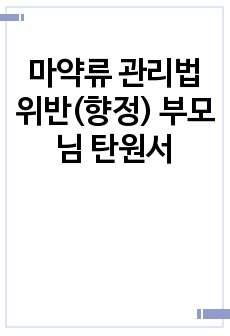* 본 문서는 배포용으로 복사 및 편집이 불가합니다.
서지정보
ㆍ발행기관 : 한국교육학회
ㆍ수록지정보 : 교육학연구
ㆍ저자명 : 張二權
ㆍ저자명 : 張二權
목차
Ⅰ. 緖論Ⅱ. 臨床奬學의 理論 背景
Ⅲ. 臨床奬學의 諸 理論模型
Ⅳ. 臨床奬學의 模型定立
Ⅴ. 結論
參考文獻
영어 초록
Ⅰ. Clinical supervision theory is these days considered as an effective tool of instructional improvement, and an alternative in the improvement of the general supervision system. The purpose of this study is to build a more comprehensive clinical supervision model. Its specific objectives could be stated as follows :1. To build a theoretical framework to analysize existing clinical supervision models, by systematically reviewing and synthesizing clinical supervision theories.
2. To clarify the contents and the essential characteristics of various clinical supervision models, such as those by Cogan, Goldhammer, Acheson & Gall, Hunter, and other American scholars.
3. To develop a new c1inical supervision model, based on the analysis of the various supervision models, which can be utilized as an effective tool of instructional improvement in the Korean educational system.
Ⅱ. The methodologies adopted for this study are :
1. Analytical examination of the related literatures including existing studies on the clinical supervision theories and models.
2. Development of a theoretical model of clinical supervision.
Ⅲ. The results of the study could be summarized as follows :
1. Traditional supervision system may have yet to solve various instructional problems by improving teaching-learning relationship. It seems quite clear, from the analysis of the existing clinical supervision models, that the clinical supervision may be one of the most effective approaches for the instructional improvement. Clinical supervision system as a new approach of supervision for instructional improvement has been studied extensively by American scholars since 1970s, and clinical supervision models have been known and validated as an effective tool of instructional improvement among scholars and educators.
2. The structural components of the typical clinical supervision models are as follows :
a. Cogan’s clinical supervision model-Stage one, establishing the teacher-supervisor relationship : Stage two, planning with the teacher : Stage three, planning the strategy of observation : Stage four, observing the instruction : stage five, analyzing the teaching-learning processes : Stage six, planning the conference strategy : Stage seven, the conference : and Stage eight, renewed planning .
Cogan’s model seems to have been born from the emphasis on the cooperative endeavor to improve pre-service supervision process because of the inappropriateness of the traditional supervision.
b. Goldhammer's clinical supervision model - Stage one, rationales and purposes of the pre-observation conference ; Stage two, rationales and purposes of observation ; Stage three, rationales and purposes of analysis and strategy ‘ Stage four, rationales and purposes of the supervision conference ; and Stage five ; rationales and purposes of the post- conference analysis
The main concepts of Goldhammer's model are client- centered counseling and self-counseling of Carl Rogers.
c. Acheson & Gell’s clinical supervision model-Stage one, the planning conference ; Stage two, the classroom observation ; and Stage three, the feedback conference .
This model indicates, systematically, the specific procedures, techniques, and tools of each stage in the clinical supervision activities.
d. Hunter's clinical supervision model consits of descriptive contents of clinical supervision theory based on teaching-learning theories
ITIP (Instructional Theory into Practice), which is the major component of Hunter's clinical supervision model, concerns the contents of learning, the patterns of learners, and the behaviors of teachers, and is the basis of teacher evaluation tool.
In addition, Reavis, Gorton, Abrell, MacAdam, Boyan-Copeland, and Bellon- Jones also developed models of clinical supervision with specific contents by each stage .
Ⅳ. Last, from the preceding analysis of the typical clinical supervision models, a new model has been drawn. The clinical supervision model developed in this study is shown as follows :
Stage one ; Pre-observation Conference
↓
Stage two : Classroom Observation
↓
Stage three : Post- observation Conference
↓
Stage four : Plan for Instructional Improvement
↓
Stage five : Evaluation
This model has five stages : Stage one, pre- observation conference ; Stage two, classroom observation ; Stage three, post-observation conference ; Stage four, plan for instructional improvement ; and Stage five, evaluation. Each stage is in turn divided into 3~4 substages indicating a set of specific cooperative activities by teachers and supervisors.
A major way to develop the clinical supervision model is the systems approach. It is hoped that this new model of clinical supervision developed here tentatively will be put to the experimental uses in the field, help improve our supervision system, and accelerate further studies on clinical supervision.
참고 자료
없음태그
"교육학연구"의 다른 논문
 幼稚園 敎育課程과 國民校 敎育課程과의 連繫性17페이지
幼稚園 敎育課程과 國民校 敎育課程과의 連繫性17페이지 幼兒敎育者養成 敎育課程과 連繫性 문제29페이지
幼兒敎育者養成 敎育課程과 連繫性 문제29페이지 幼稚園敎師敎育制度17페이지
幼稚園敎師敎育制度17페이지 兒童福祉18페이지
兒童福祉18페이지 “幼稚園과 國民學校의 連繫性을 위한 方向模索”21페이지
“幼稚園과 國民學校의 連繫性을 위한 方向模索”21페이지 福祉社会의 教育思想20페이지
福祉社会의 教育思想20페이지 先進国에 있어서의 社会福祉와 教育24페이지
先進国에 있어서의 社会福祉와 教育24페이지 児童福祉와 教育32페이지
児童福祉와 教育32페이지 教員福祉·學生福祉27페이지
教員福祉·學生福祉27페이지 福祉社会의 槪念과 価値観教育의 条件19페이지
福祉社会의 槪念과 価値観教育의 条件19페이지


























